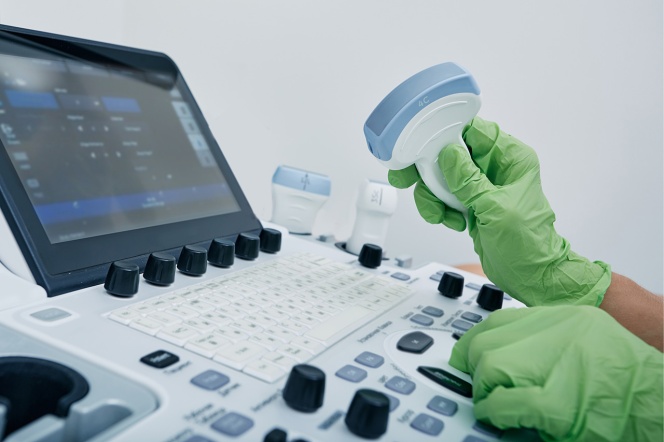Date added: 2023-05-16
Next-generation, eco-friendly piezoelectric materials

Piezoelectricity is a process that consists in converting mechanical energy into electrical energy and vice versa. Although piezoelectric devices remain largely invisible in everyday life, they are applied in many everyday devices: from piezoelectric igniters, quartz watches, to microphones and loudspeakers. Piezoelectric elements are used to measure forces and stresses, e.g. in "digital" scales. Piezoelectric transmitters/receivers work in hydrophones and as ultrasound sensors (USG). The range of applications of piezoelectrics is extensive.
However, while the concept of using piezoelectricity is simple, finding piezoelectric materials that are environmentally friendly and have a large piezoelectric effect has been a major obstacle for over a hundred years. A new effect similar to piezoelectricity has been known for about 10 years: the so-called electrostriction effect. Discovered in an unexpected group of materials (cerium oxide), the demonstrated electromechanical effect is much greater than that of traditional materials.
The most common piezoelectric materials used so far contain lead, which is harmful to the environment and should be withdrawn from the European Union market. Prof. Sebastian Molin from the Faculty of Electronics, Telecommunications and Informatics is conducting research on a new generation of electrostrictive materials that are lead-free, biocompatible and based on doped cerium oxide.
The research is carried out as part of the international m-era.net project, together with partners from Denmark (Technical University of Denmark, CTS Ferroperm) and Brazil (UFABC).
– The task of my team is to produce new cerium oxide-based materials with specific properties, while our Danish partners will study them in terms of their piezoelectric capabilities and application in practical generation systems. Our group will use different parameters of material synthesis, different admixtures and model these materials to get the best results.
The creation of new nanomaterials based on doped cerium oxide, which is quite cheap and easy to obtain, opens up a wide range of applications for piezoelectric materials, e.g. for ultrasound generation, in particular for medical applications. tools are more frequently used, for example, in microsurgery.
The project is scheduled for three years. It received funding in the amount of PLN 617,000. in the M-ERA.NET competition. M-ERA.NET is a network of 49 organizations from 35 European countries supporting research in the field of materials engineering. Poland is represented in it by the National Science Center and the National Center for Research and Development. In the M.ERA-NET 3 Call 2022 competition, the project of Prof. Sebastian Moiln "Defective metal oxides - a new generation of lead-free piezoelectric materials for ultrasonic transducers” was ranked first and received funding in the amount of PLN 617,000.

